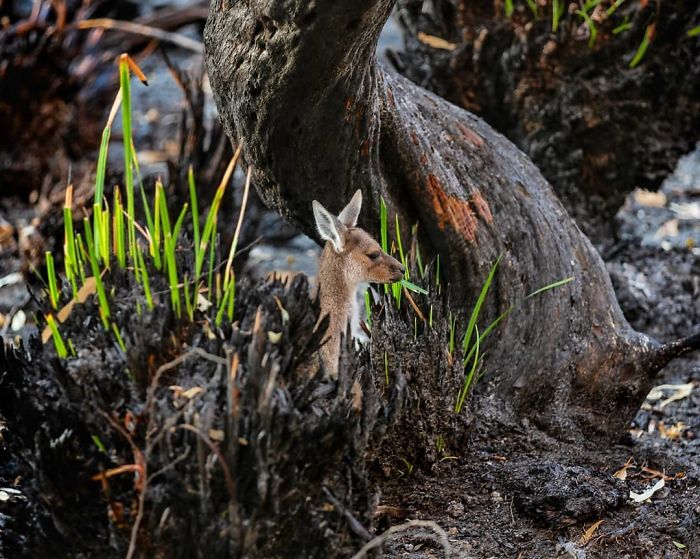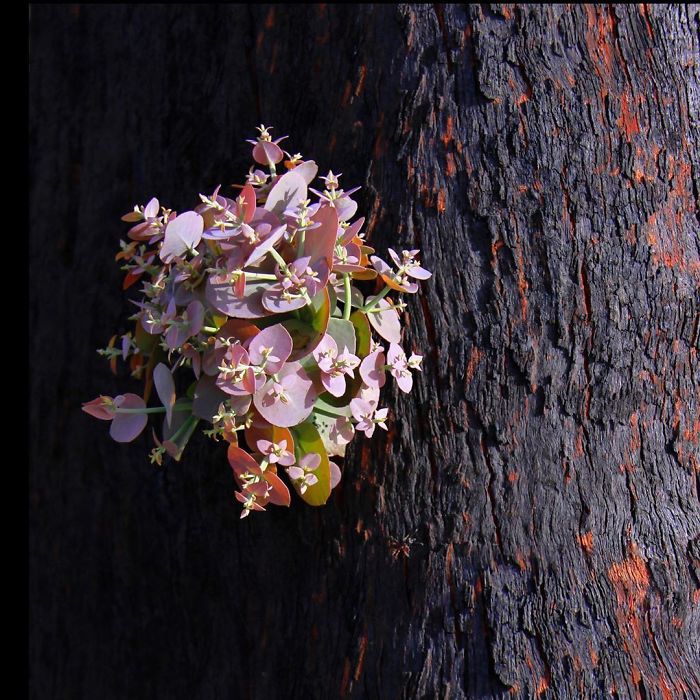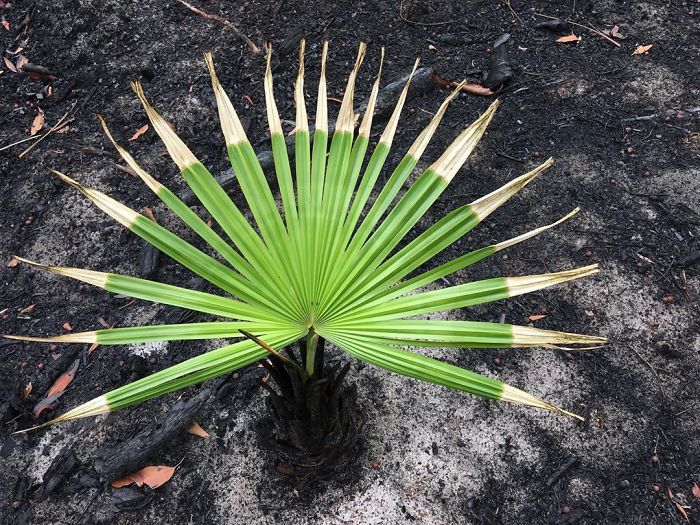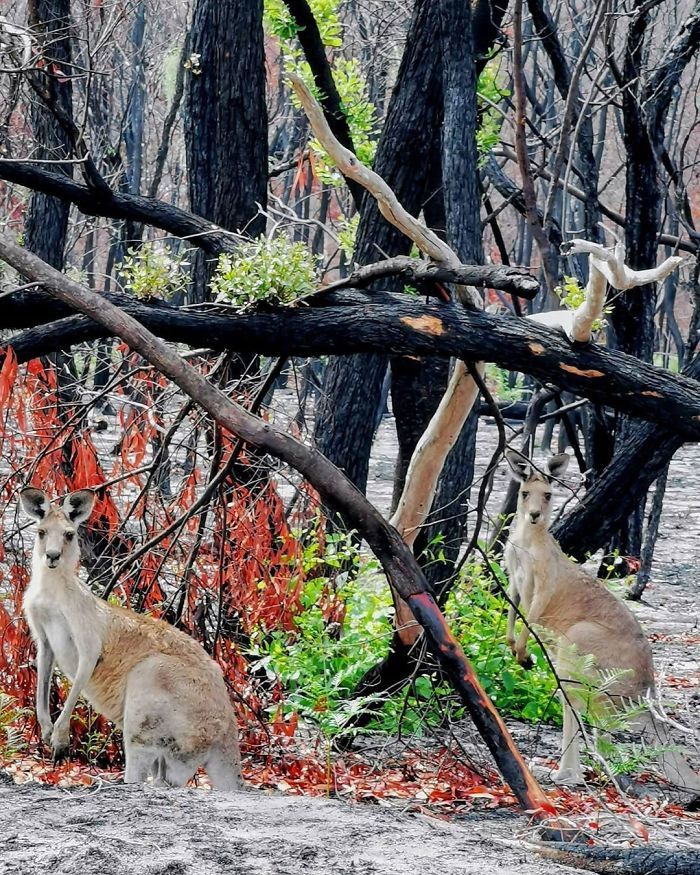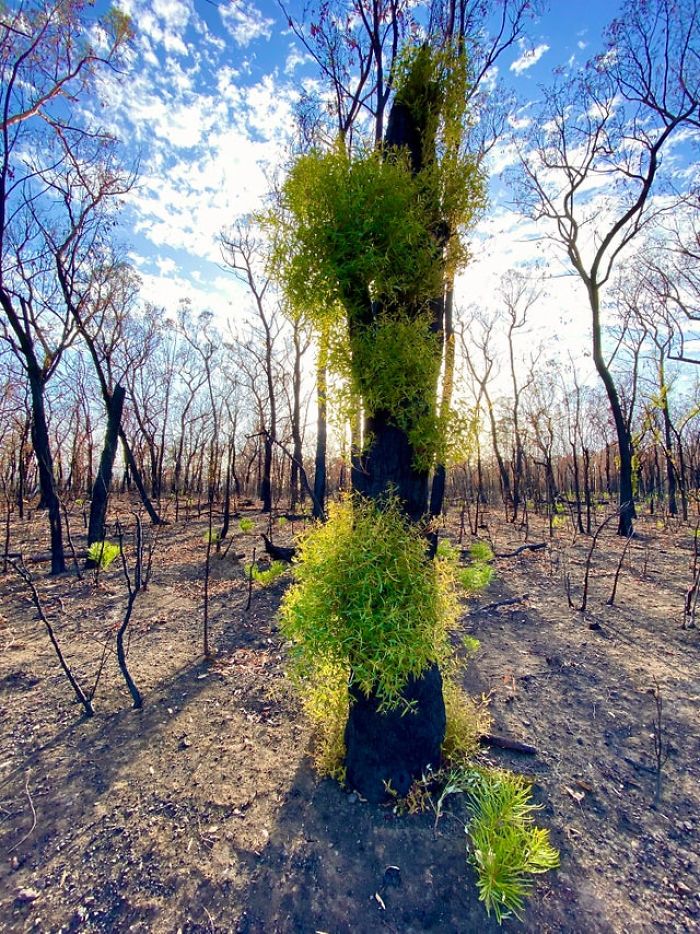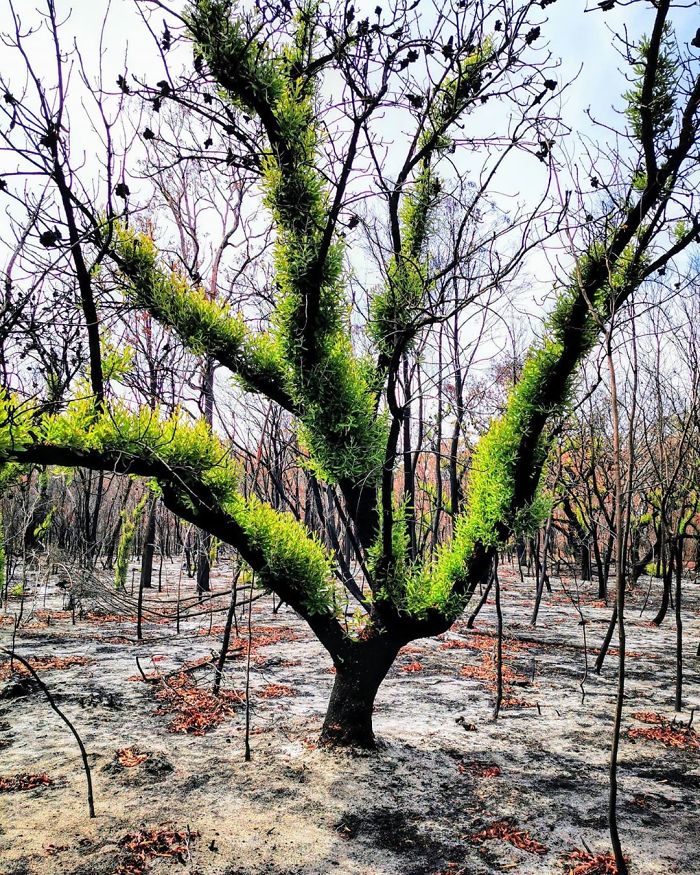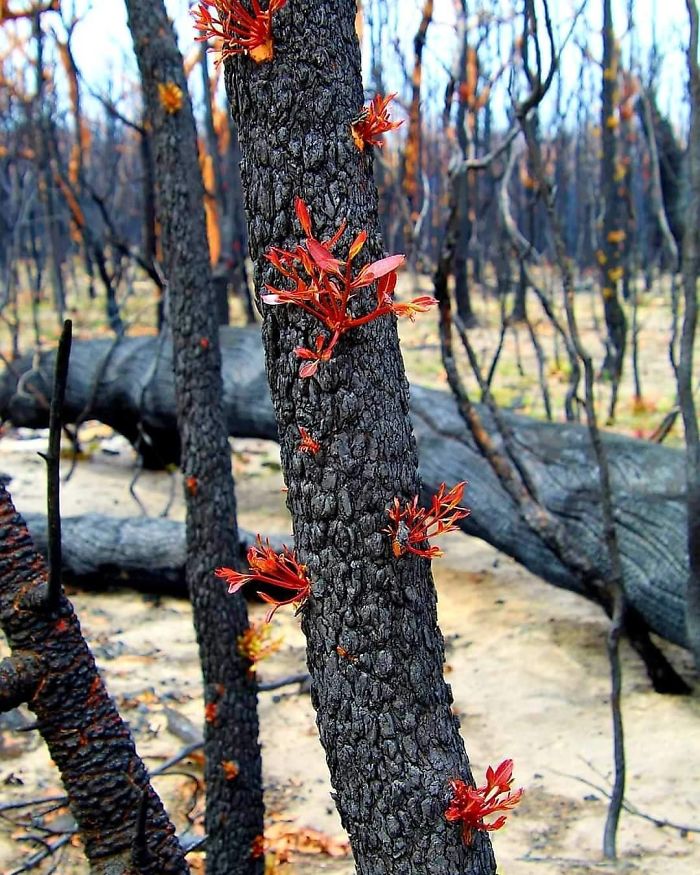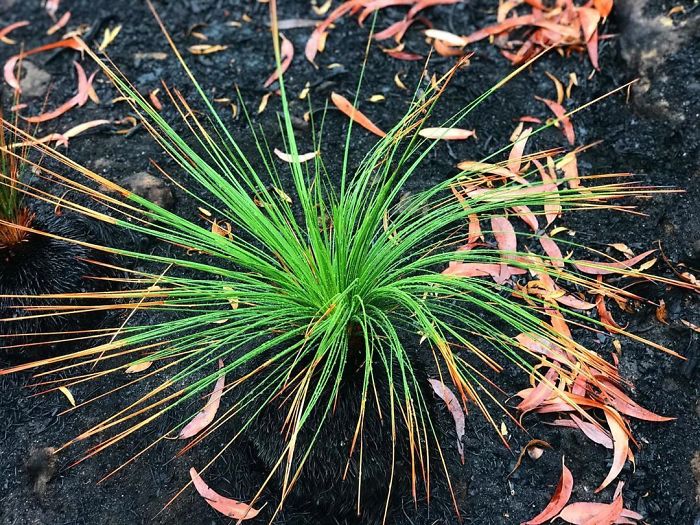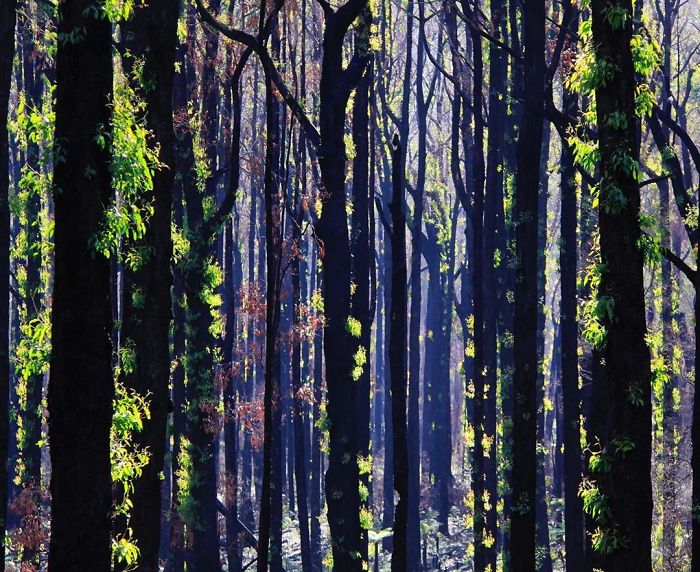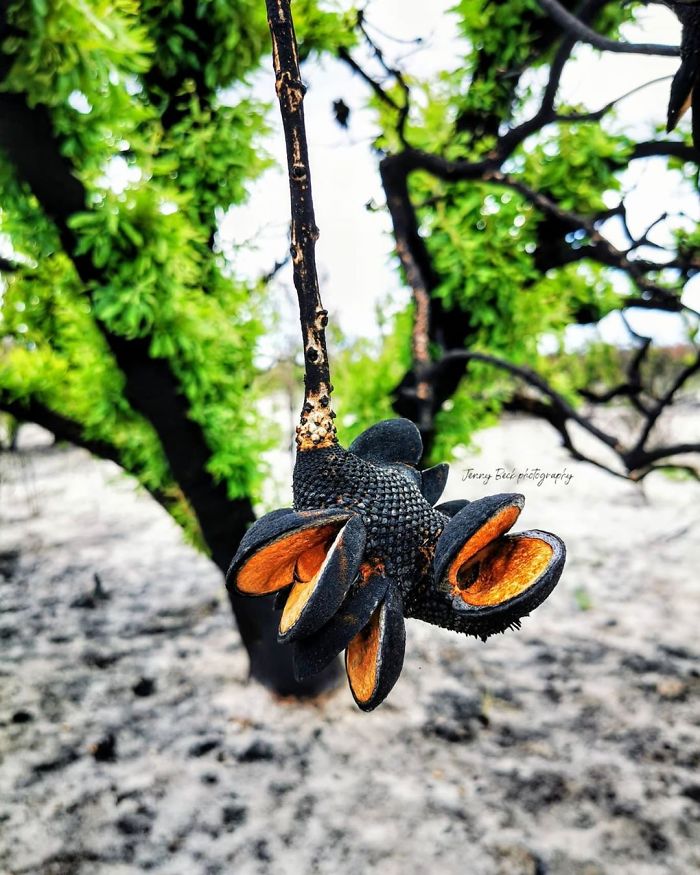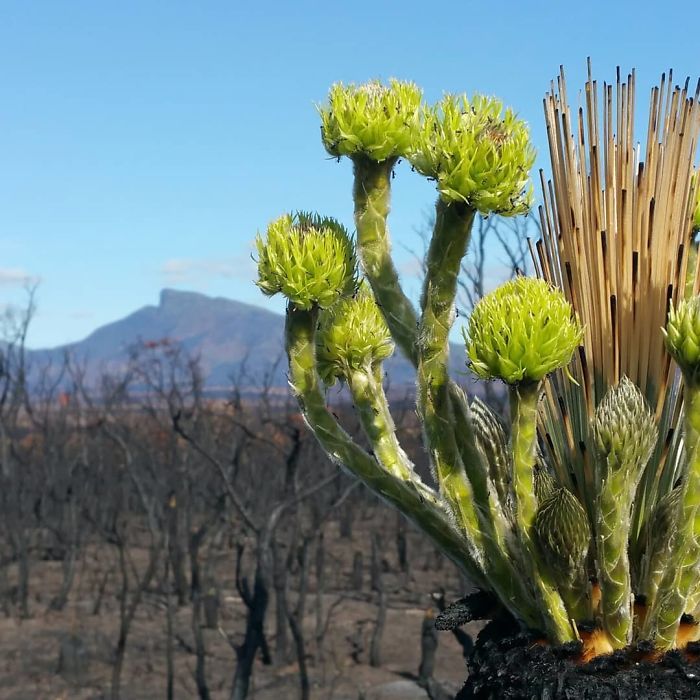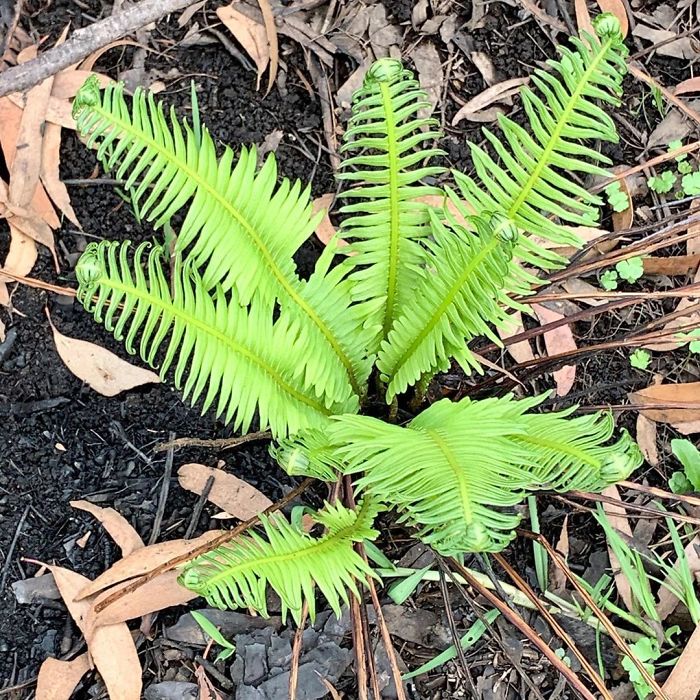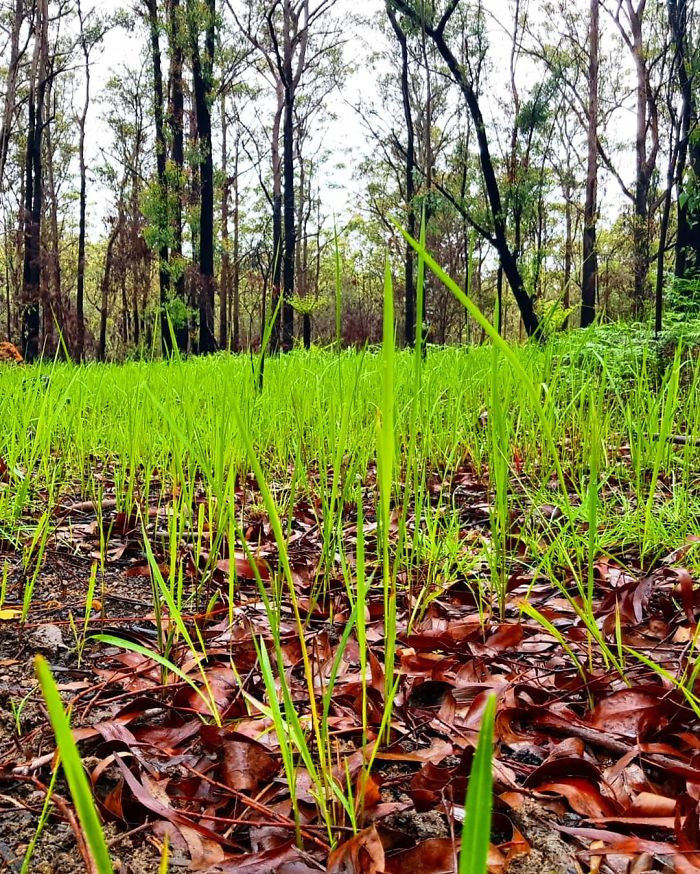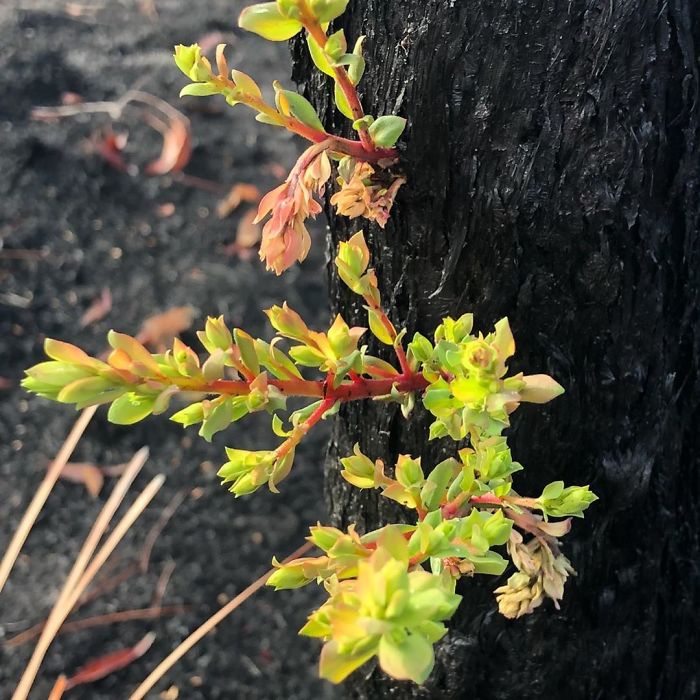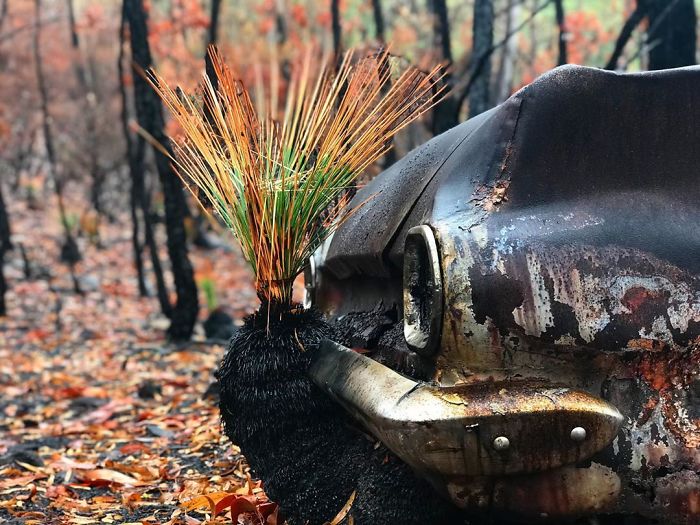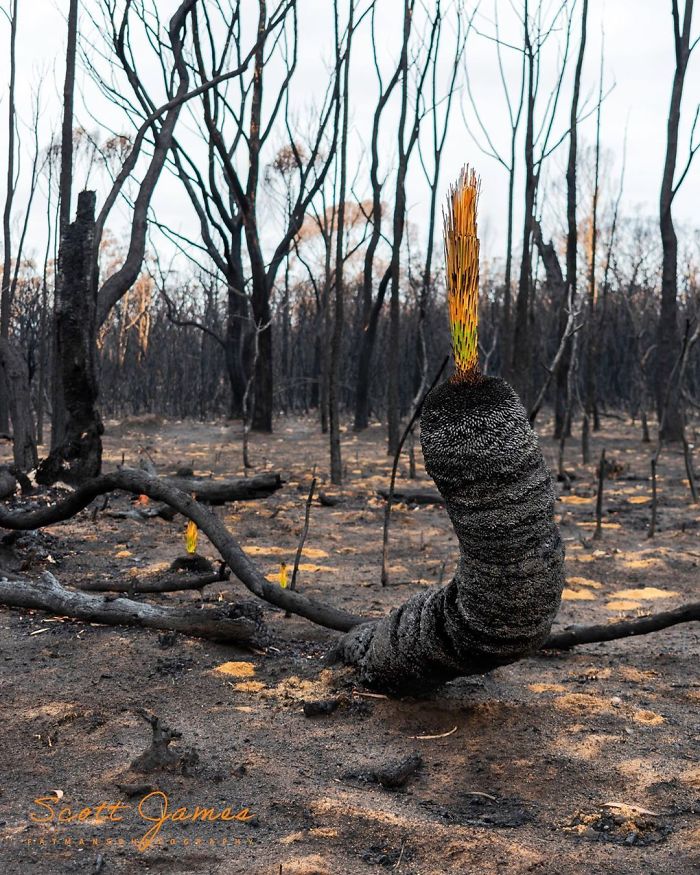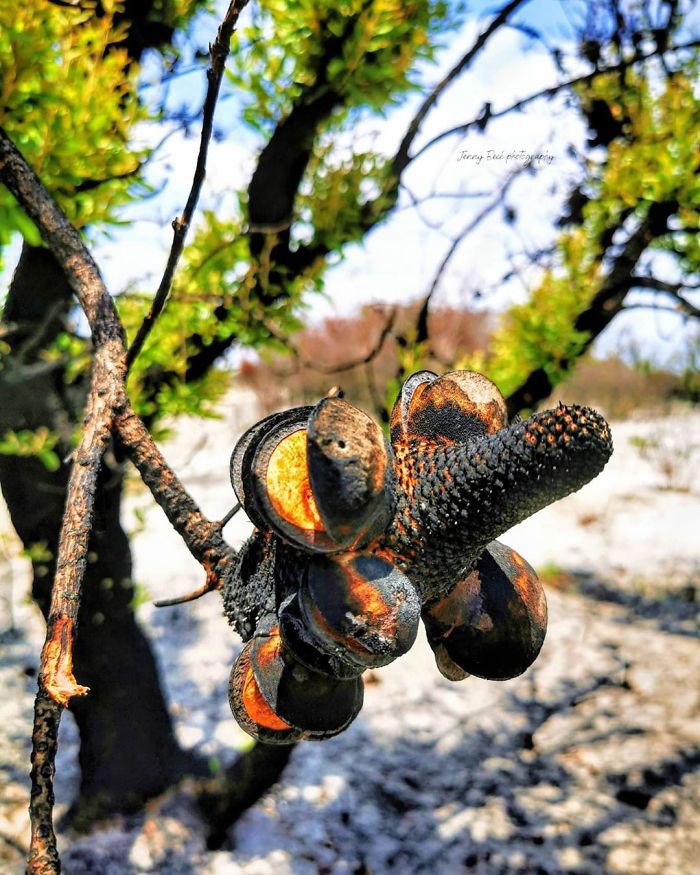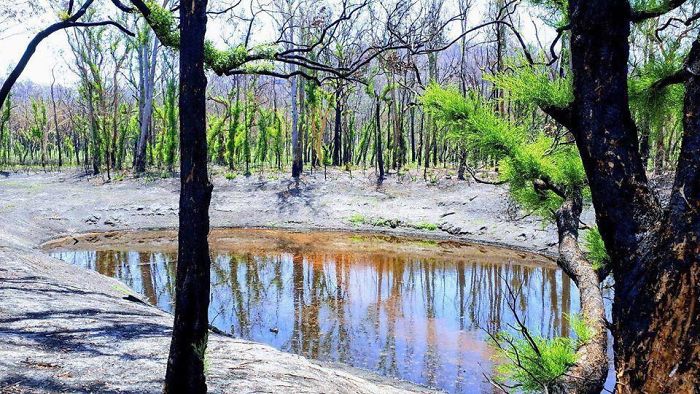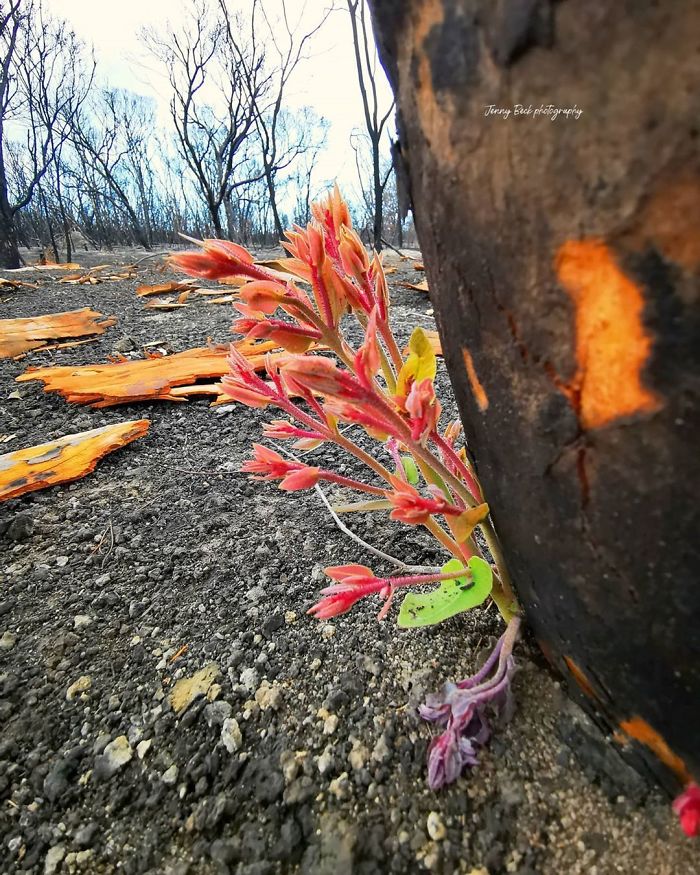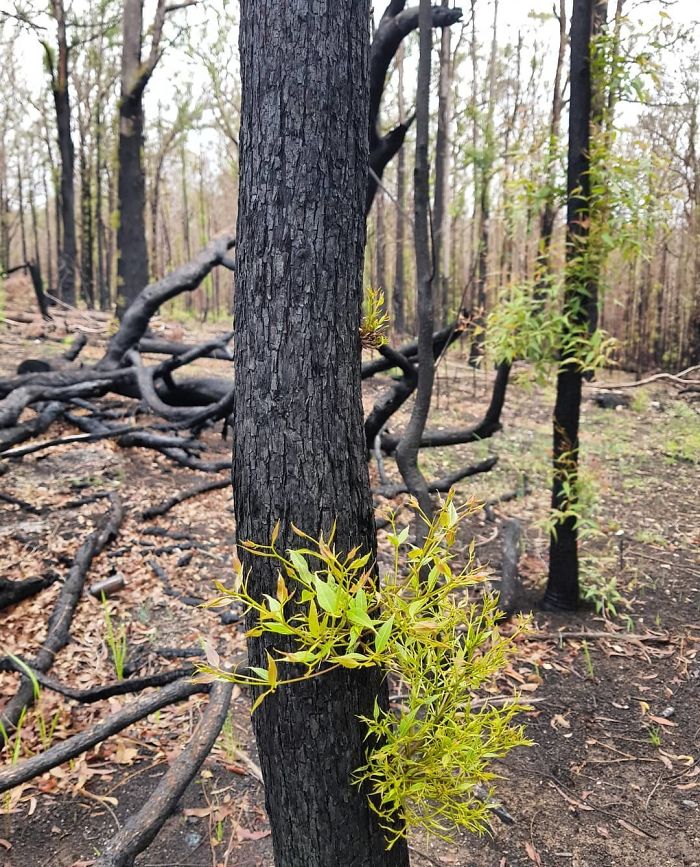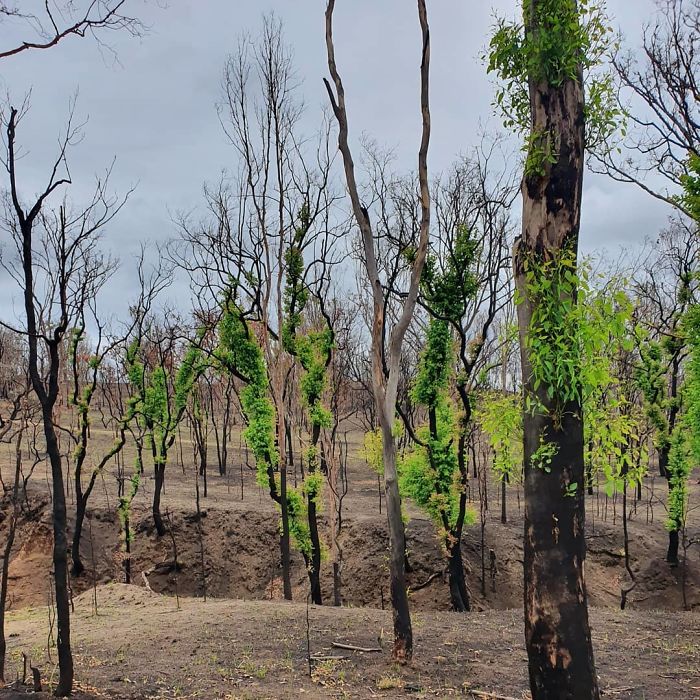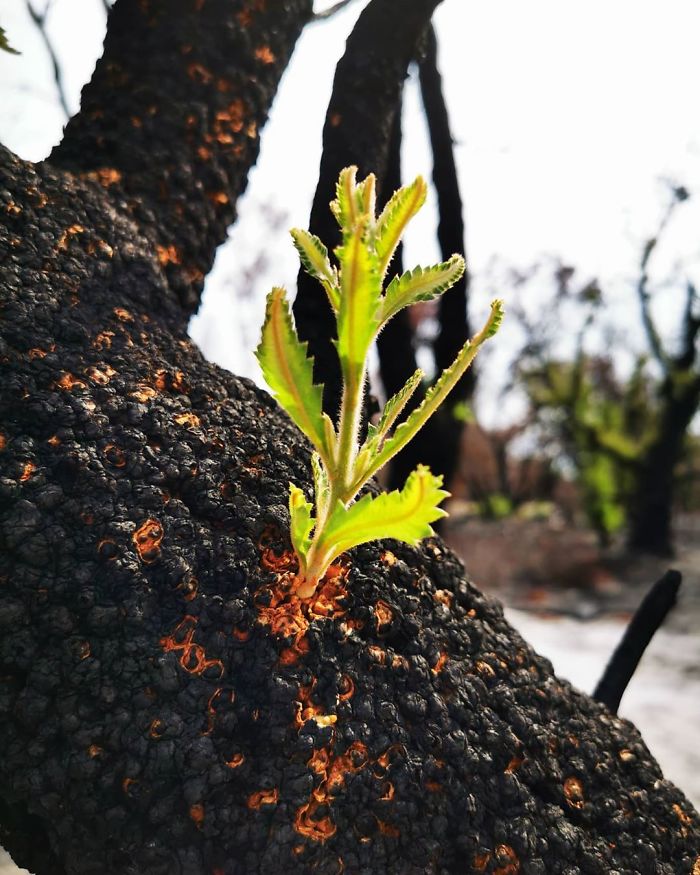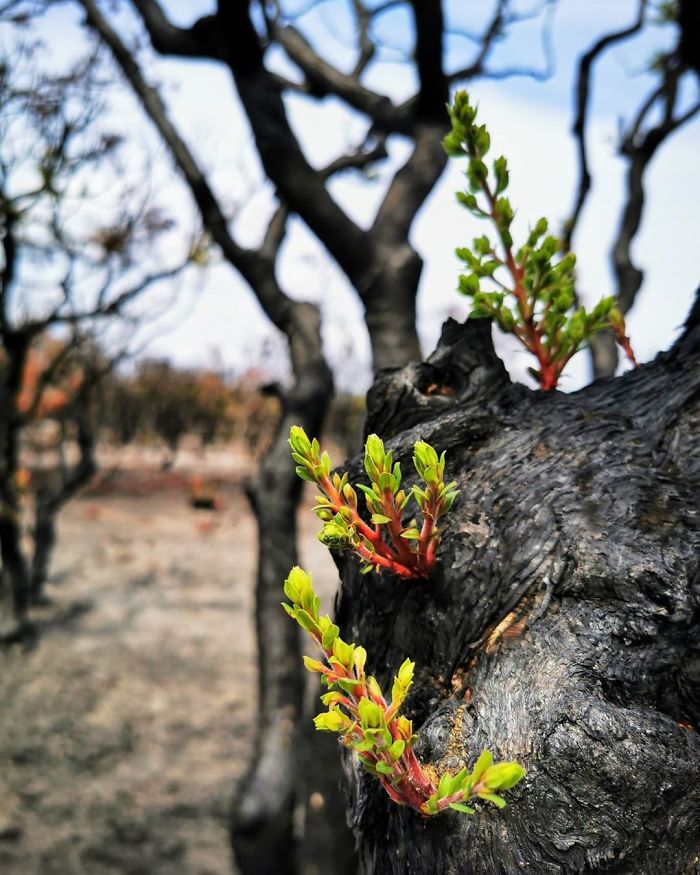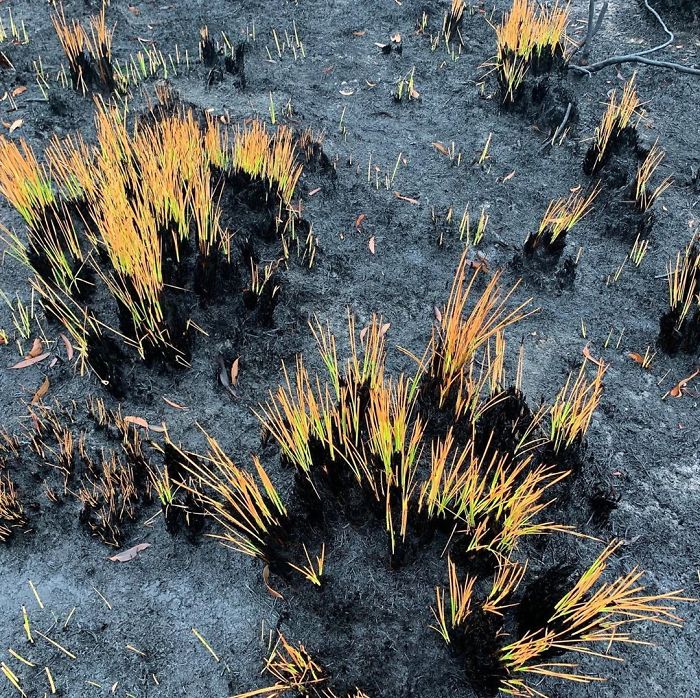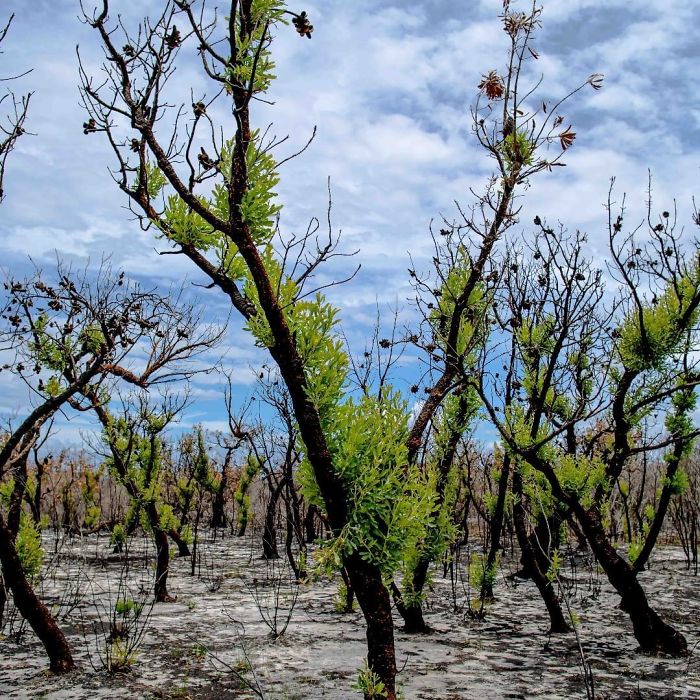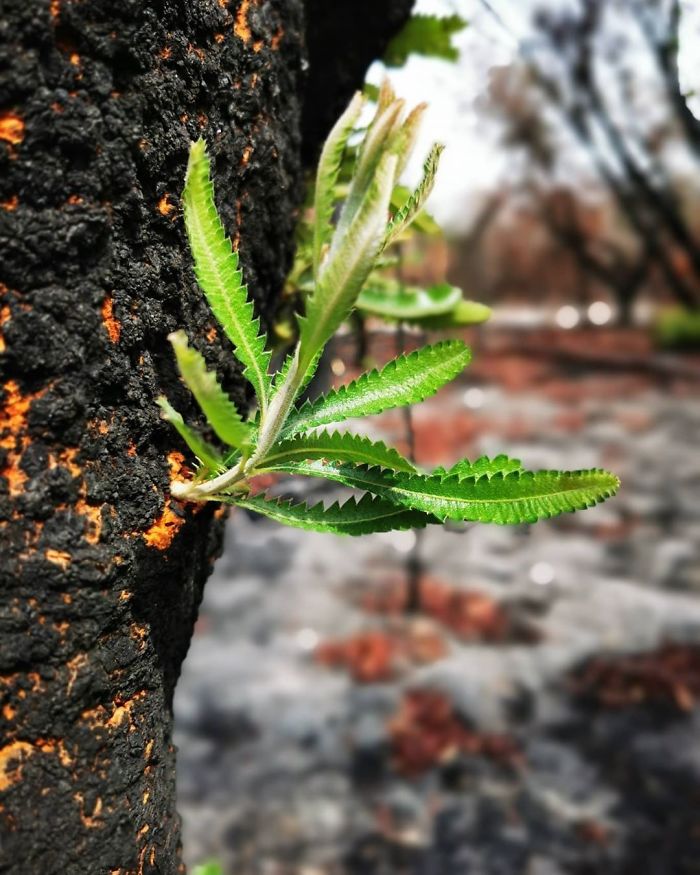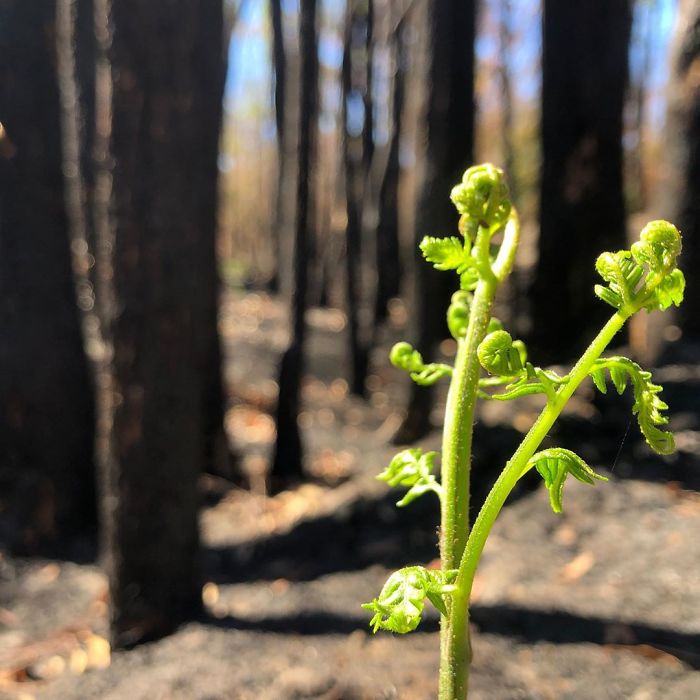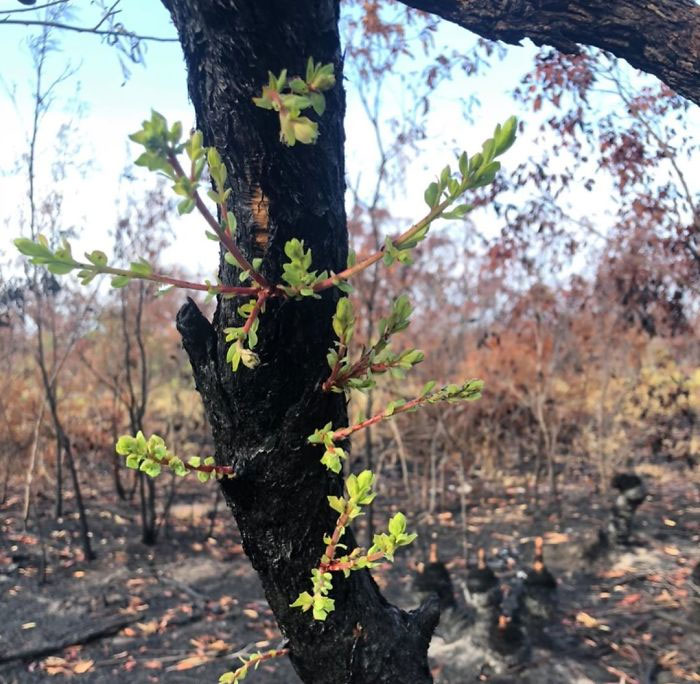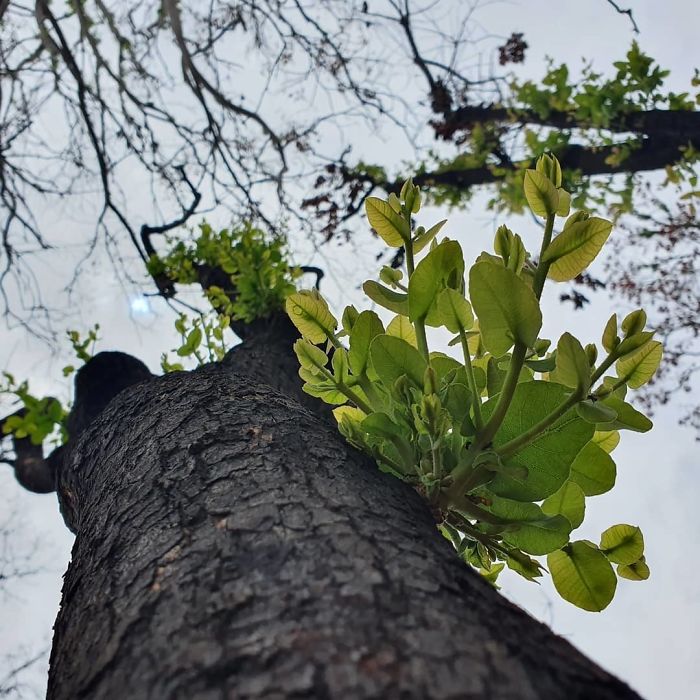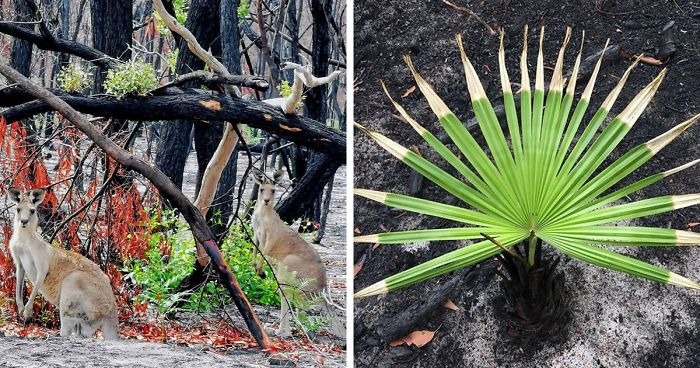
161Kviews
Life Is Slowly Returning To Scorched Australian Lands And Here Are 30 Hopeful Photos
For the last few months, Australia has been tormented by natural disasters caused by extreme weather, from destructive fires worsened by drought, to flash flooding that occurred when that drought suddenly ended. You can see photos of the damage that the bushfires have already done to wildlife and communities here and here. While the southern states of Victoria and New South Wales aren’t out of the woods yet and many fires are still raging, photos show that life goes on in the areas that the fire already passed through.
Plants that have evolved to shield their buds from fire so they can quickly resprout after being burnt at the surface, or even take advantage of the nutrients in ash, are called pyrophytic plants. It’s not uncommon to see them blooming en masse after a devastating fire, and the brilliant greens and reds against the blackened landscape have a stunning visual effect. But even though the cycle of being burnt and growing back again is normal for Australia’s vegetation, the plant and animal survivors still face challenges.
This post may include affiliate links.
In 2011, following a 2009 fire that was the most deadly to humans in Australia’s history, it was observed that previously unknown and rare plants had emerged in Victoria’s Kinglake National Park. When fire clears out the vegetation cover preventing light from reaching the forest floor, dormant seeds lying in wait in the soil have a chance to flourish, allowing the ecosystem to start off on a new foot.
The current disaster completely eclipses that fire or any yearly fire season since then in terms of the amount of land consumed, though, and just because Australia’s ecosystem has the ability to bounce back from fires, that doesn’t soften the blow of the human and animal suffering that have taken place as immediate consequences. Worse yet, scientists say that more intense summer temperatures and droughts in recent years are making large-scale fires more likely as well as increasing the duration of the fire season.
In addition to all the animals killed in the blaze, many more that live in the forest understory or have specific diets have had their habitat destroyed, so casualties may continue even among the survivors after the fire has cleared out of an area. This aspect of the ecosystem won’t rebuild as easily and some of the affected animals are already endangered or close to extinction. Scientists have estimated that 30% of the koala population may have already died.
Organizations working to rebuild communities have had to send a word of caution to people abroad who want to help, though. Some organizations have received so many boxes of blankets and mittens for recuperating animals that they no longer have a place to store them and also aren’t too pleased with the environmental impact of international shipping.
People like to donate material goods because they feel like they know exactly what they’re being used for, but Juanita Rilling of the US Center for International Disaster Information urges people to realize that it is tremendously more practical to identify and send financial donations to organizations providing assistance to the animals and people that have lost their homes.
Note: this post originally had 49 images. It’s been shortened to the top 30 images based on user votes.
Actually..I'm not too surprised by this. Many plants take advantage of the carbon and nitrogen that gets left behind by fires. It's also the reason that places like Hawaii have such lush greenery..the volcanic soil. Wonderful to see that Australia's experiencing recovery already.
Some plants like the Banksia even need fires to open their seed pods. Its a natural cycle. https://www.advancedsciencenews.com/heat-triggered-release-opening-banksia-seed-pod/
Load More Replies...Yes there is hope. But many fires are still burning. And volunteers are putting out food, on Kangaroo Island , desperately trying to prevent the second wave of deaths. As animals starve to death. We don't know how many species have become extinct. We might never know. Many animals are still in recovery from terrible injuries in emergency shelters. https://www.rspca.org.au/
The worst thing is knowing that the peak of fire season is not yet past. Fearing February. Feeling helpless.
Load More Replies...While it’s good that some plant life is returning, the fires are far from over. It’s not even peak of fire season yet.
Actually..I'm not too surprised by this. Many plants take advantage of the carbon and nitrogen that gets left behind by fires. It's also the reason that places like Hawaii have such lush greenery..the volcanic soil. Wonderful to see that Australia's experiencing recovery already.
Some plants like the Banksia even need fires to open their seed pods. Its a natural cycle. https://www.advancedsciencenews.com/heat-triggered-release-opening-banksia-seed-pod/
Load More Replies...Yes there is hope. But many fires are still burning. And volunteers are putting out food, on Kangaroo Island , desperately trying to prevent the second wave of deaths. As animals starve to death. We don't know how many species have become extinct. We might never know. Many animals are still in recovery from terrible injuries in emergency shelters. https://www.rspca.org.au/
The worst thing is knowing that the peak of fire season is not yet past. Fearing February. Feeling helpless.
Load More Replies...While it’s good that some plant life is returning, the fires are far from over. It’s not even peak of fire season yet.
